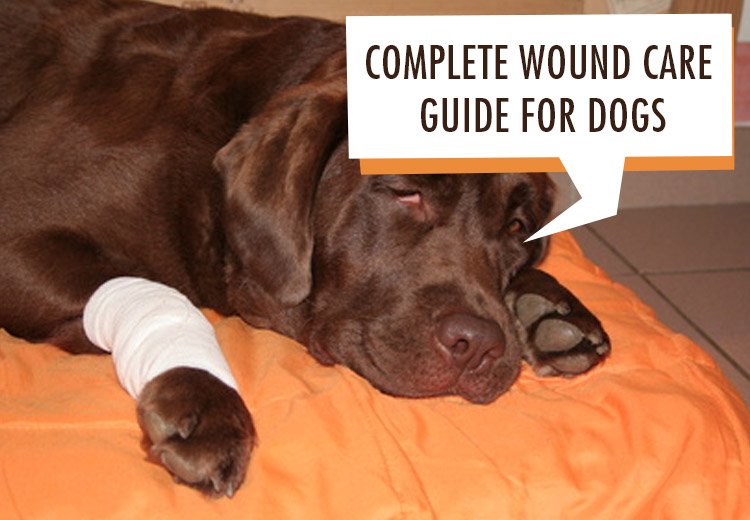-
Popular Brands View All BrandsPopular Brands View All BrandsPopular Brands View All BrandsPopular Brands View All BrandsPopular Brands View All Brands
- Dogs
- Cats
- Brands
- New Arrivals
- Below R150
- Refer & Save More
- Mother's Day Sale
Feb 22, 2019

Dogs are restless and exuberant which makes them susceptible to injuries quite easily. Sometimes these wounds can be minor and can be taken care of by the owner itself whereas at times there could be major injuries that cause excessive blood loss and lead to life-threatening conditions. Such injuries require immediate vet intervention. However, no matter how big or small a wound is, it must be addressed on time because an open wound can be a breeding ground for bacteria and viruses. They can swiftly fester and exacerbate the wound to a level where a vet may even have to amputate or remove the injured area. Hence, it is imperative for all pet owners to provide proper wound care to their furry kid.
Open wounds are classified into 4 categories depending on the cause of the injury.
A laceration is generally a tearing of the skin which can occur inadvertently or intentionally due to a tool, sharp edges, machinery and or knives. Though lacerations heal easily within a few days, deep ones may cause rapid blood loss and thus require immediate attention.
Abrasion is a minor wound that doesn’t bleed much but must definitely be cleaned and taken care of. Abrasions happen when a dog’s skin rubs to a rough surface which causes scrapes or grazes on the skin.
Puncture can be a sharp and deep wound that may not bleed as much but can cause serious injury to the tissue underneath and in the internal organs.
Avulsion is the most severe and fatal wound which may happen due to major accidents like when a dog is badly run over by a car, explosions etc. In this case, the skin and the underlying tissues can get profusely damaged. The dog may lose a body part or may even collapse due to excessive blood loss.
Other than these four types of wounds, a vet may also consider other factors while examining the injured pet, like, the location of the wound and the contamination level as well.
Location plays an important part in deciding the mode of treatment to be taken for pet wound care. Paws, neck, abdomen, eyes and ear are some of the common places where dogs get injured and thus the treatment also differs according to the location. Eye wound may not be treated the same way as neck or paw wound, therefore, it is important to check the location of the wound before setting off the treatment.
Wounds are also categorized on their level of contamination, namely infected wounds, and surgical wounds. Surgical wounds are generally clean wounds whereas infected wounds, as the name itself suggests, are contaminated with bacteria or viruses. Puncture or a laceration that is left unattended may develop pus which attracts pathogens and these pathogens may then traverse deep into the tissue causing severe or permanent damage to the tissue underneath and the surrounding area. Contaminated wounds thus, must be medically treated without any delay.
When a wound starts festering, it leads to pus accumulation in the wound cavity. This is called an abscess. An abscess development is a bad sign and if at all you notice a wound has transformed into an abscess, take professional help. Other signs that a wound is infected also include:
You must use simple warm water or warm saline water to clean the dog’s wound to remove any dirt which could infect the wound. Some vets may also recommend using diluted chlorhexidine or iodine to wash off any debris or dirt. Moreover, use of shampoo, soaps, hydrogen peroxide or alcohol should be strongly prohibited unless your vet has recommended for it. The necessary steps that you must follow to treat a dog’s wound should include the following.
In case the wound has started building into an abscess, it is better to take the vet’s help. He may then examine the wound and lance the abscess after anesthetizing the pet. This is done to drain all the pus and infected blood from the wound.
Most of the times vets prefer to close the wounds surgically for a speedy recovery. However, in cases where the wound is highly infected, a vet would rather keep the wound open to apply an antimicrobial, topical treatment in order to eliminate the deep-rooted tissue infection.
A wound which is more than an inch long or is present at a vital area like chest or abdomen must be handled only by a vet.
Dogs are prone to injuries and when they do get one, it’s only you who can take care of their needs. So, if at all you confront a situation like this, it is better to stay prepared.
Mar 27, 2025
Are you irritated and worried at the same time seeing your pet shedding and leaving their hair all over the place? Well, shedding is a norm...
Mar 21, 2025
Your furry friends look adorable when they smile, flashing their bright, shining teeth. But, their radiant smile can get dull without your ...